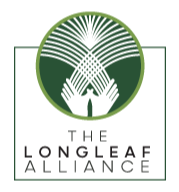Videos and Webinars
Below you can find conservation and working lands videos and webinars developed by our partners. These webinars are meant for a wide range of audiences — from technical experts and practitioners to landowners and the public.
Webinar- Course on Native Warm-Season Grass Forages and Grazing Management for Bobwhites
DEC 1-2, 2021. This webinar covers native warm-season grass forages in the eastern U.S. and integrating grazing management for Northern Bobwhites. The webinar was targeted at technical advisors who develop grazing management plans with landowners. This webinar was presented with the support of the Working Lands For Wildlife – Northern Bobwhite project. Key Topics: science-based information related to native warm-season grass forages, their attributes, proven establishment techniques, management guidelines, and integrating grazing management with bobwhites
Grazing Management Minute: Establishing Native Warm Season Grasses
In ODA's latest Grazing Management Minute, join Quail Forever's Jason Jones and Clinton County farmer Nathan Rice to learn more about establishing native warm season grasses.
Eastern redcedar burning tips
Landowners and forest managers are welcomed to learn about how to clear and Eastern redcedar and maintain their lands and forests with prescribed burns.
The Importance of Regular Prescribed Burning
Landowners and producers are welcomed to learn about the importance of regular prescribed burning. View property that was recently burned and how this treatment helps manage the land.
Managing Burns Safely
Tips for landowners and producers on how to burn their pasture safely and efficiently in the spring. Brought to you by John Weir at Oklahoma State University.
The benefits of prescribed burns in growing season
Fire Ecologist John Weir describes the benefits of prescribed burns during the livestock grass growing season.
The Benefits of Opening Forest Canopies
Learn about the benefits of creating open canopy in oak forested areas -- for livestock, aesthetics, and wildlife -- with Dwayne Elmore from the Oklahoma State University Extension.
The Value of Land
This video shares the stories of low-wealth heirs’ property owners in the South -- and how they are being served by The Center for Heirs' Property to protect rural, family-owned land.
No-Till Intensive Trainings
8-part webinar series with farmers, researchers, or other expert practitioners. The classes will discuss common obstacles to implementing a successful no-till program, address these issues through field proven technical knowledge, and follow a training plan that will best enable the TSP (technical service provider) to support the farmers in the no-till practice transition. This course is open to any service provider working with farmers in the Northeast! Upon course completion participants will receive a No-Till Intensive Training Certificate of Completion, as well as be eligible for 8 CCA credits and 1 Pesticide credit.
Winter Grazing - a Better Way to Feed
In this video, three livestock producers describe how extending the grazing season with winter grasses has saved them time and money, while also improving the environment; and they demonstrate the methods they used to achieve these savings. Sponsored by the NRCS - East National Technology Support Center.
Introduction to LANDFIRE video series
Through a short series of videos, learn about LANDFIRE: a shared program between federal wildland fire management programs that provides landscape scale geospatial products to support cross-boundary planning, management, and operations. Use LF data for landscape assessment, modeling, analysis, and more.
The Long View: Sustaining Our Oak Forests
This working lands webinar will educate landowners and natural resource professionals on working lands conservation programs intended to benefit wildlife species and promote oak forest diversity. In this webinar, we will take the “Long View” by looking back in time to gain historical grounding that will help us look forward and consider how our actions today can ensure we restore and sustain oak forests into the future. This webinar has been approved for continuing education credits. Hosted by the Ruffed Grouse Society & American Woodcock Society and the NRCS Working Lands for Wildlife program.
Reconnecting Cattle and Quail
Learn about the Working Lands for Wildlife program and work in Ohio between USDA-NRCS and local farmers and ranchers. Grazing cattle on warm season, native grasses is great for cattle as well as critical species like the Northern Bobwhite Quail. Video for landowners and cattle producers. Presented by Nick Schell (USDA-NRCS Ohio) and Dr. Pat Keyser (UT - Center for Native Grasslands Management) at the Ohio Forage and Grassland Council Conference in 2017.
Finding and Using Landowner Data - TELE Webinar
TELE (Tools for Engaging Landowners Effectively) shares insights on how practitioners can build upon and use landowner data to meet their needs and yours.
Planning Your Landowner Engagement Strategy to Reach Your Big Goals (Part II)
Part II of a webinar series hosted by TELE - Tools for Engaging Landowners Effectively
Planning Your Landowner Engagement Strategy to Reach Your Big Goals (Part I)
Part 1 of a webinar series from TELE - Tools for Engaging Landowners Effectively
Working Lands for Wildlife: In Pursuit of the Shifting Mosaic
Ruffed Grouse Society & American Woodcock Society with Working Lands for Wildlife discuss forests, wildlife, and communities. This webinar described working lands conservation programs and how they can benefit landowners, wildlife species, and promote forest diversity. Meant for landowners and natural resource professionals.
Northern bobwhite, Grasslands and Savannas National Partnership Meeting, Feb 23rd-24th 2021 Webinar Presentation
Presentations from the 2021 WLFW Northern Bobwhite, Grasslands and Savannas Partnership Meeting
Forest Management for Northern Bobwhite Quail
In this webinar, Steve Chapman, NBCI Forestry Coordinator, will discuss pine forest management opportunities and practices that can not only help to bring back the bobwhite but also can have an impact on slowing the decline of those numerous songbird, pollinator and other wildlife species.

























